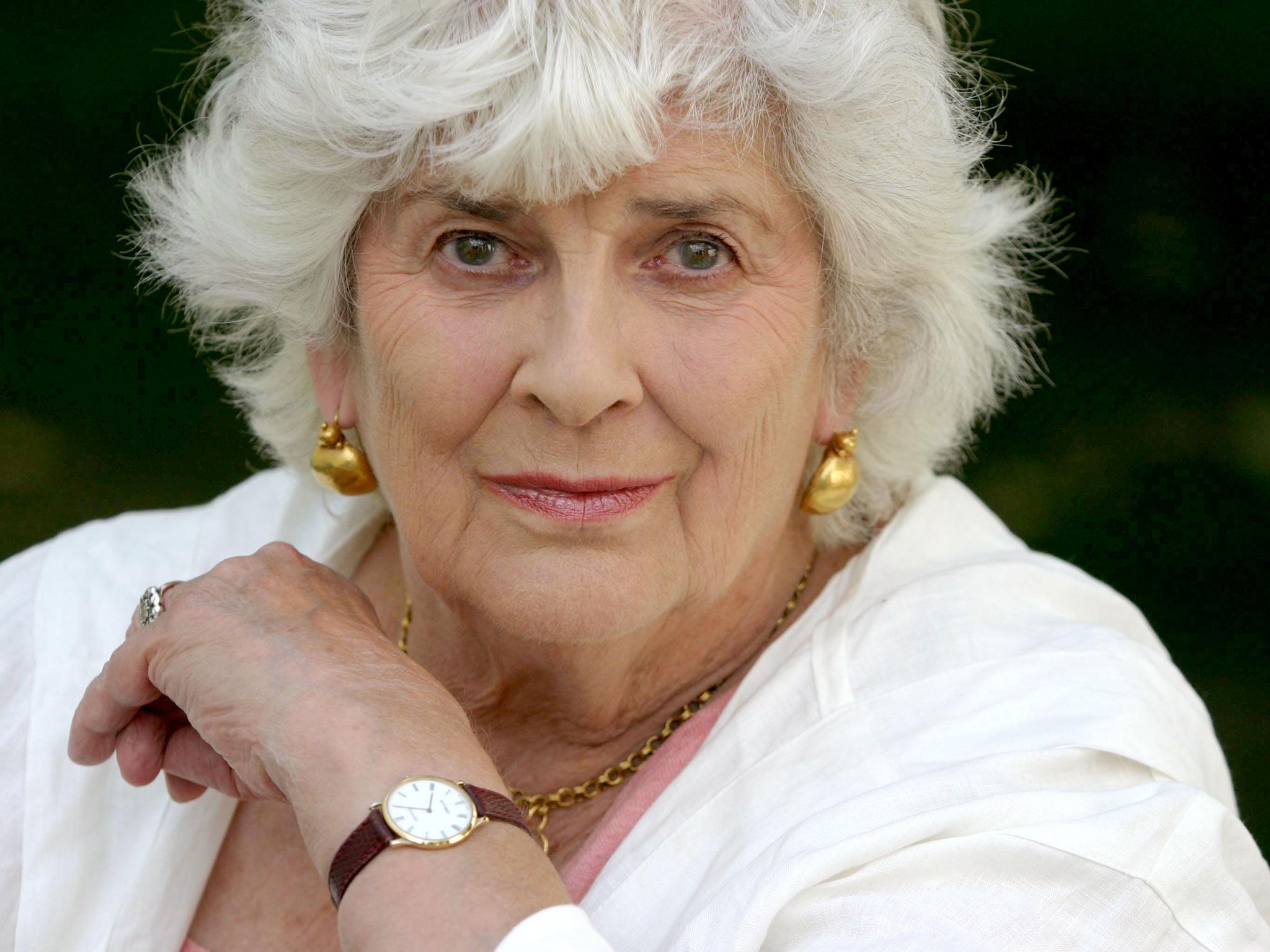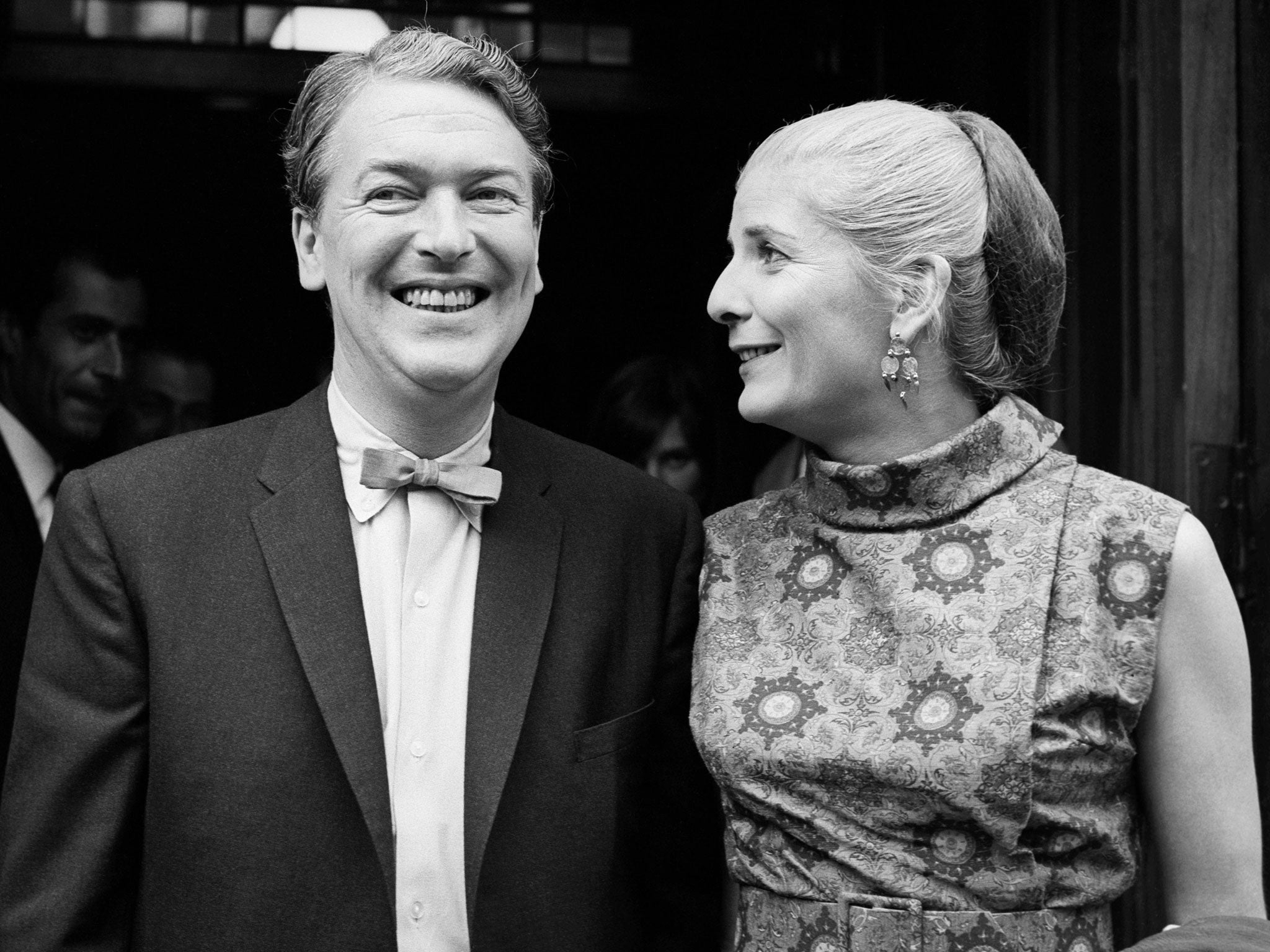Elizabeth Jane Howard: Writer
Author of the four Cazalet novels who drew upon her unhappy childhood, social circle, and many love affairs

Elizabeth Jane Howard was a novelist who might have been outstanding, but for her turbulent emotional life. With a good education and better luck with men, she could have written one exceptional novel. As it was, she brought pleasure to thousands of readers, yet it is hard to point to any one of her novels and say, this one, yes, this is a top-class book. She was neither “literary”, nor a consistent bestseller, although the four Cazalet books she wrote in the 1990s did extremely well.
Her strengths were her subtle and intelligent voice and the readability, which she once claimed should be a novel’s first aim. She focused on a corner of English life with which her readers could easily identify, was very good at place and setting and detail, and tended to use consistent types, such as the dull, retired Army officer (kindly or criminal), the confident man of the world, and the passive young girl.
The Long View (1956) began: “This, then, was the situation. Eight people were to dine that evening in the house at Campden Hill Square. Mrs Fleming had arranged the party (it was the kind of unoriginal thought expected of her, and she sank obediently to the occasion) to celebrate her son’s engagement to June Stoker . . . [who] would be introduced to a company which had otherwise long ceased to discover anything about themselves likely to increase either their animation or their intimacy, and her immediate future with Julian Fleming (a honeymoon in Paris and a flat in St John’s Wood) outlined. In due course they would descend to the dining-room and eat oysters and grouse and cold orange soufflé.” This is a very typical passage, in its Middle England setting, its excellent turn of phrase, its story-telling quality – and its indefinable bleakness.
Jane Howard was born in London in 1923. One grandfather was the composer Sir Arthur Somervell. Her mother, a ballet dancer before her unhappy marriage, “lay on the sofa and read until cocktail time”. She resented and undermined her daughter – hence the many women in the novels who lack self-esteem and wait passively for a father-replacement to come along.
Howard also read a great deal and was taught at home by governesses, having lasted only two terms at Francis Holland School. Domestic science studies and drama school in Ebury Street, London, were followed by one season in a student rep company in Devon, where Howard was Katherine to Paul Scofield’s Petruchio in The Taming of the Shrew, and another at Stratford.
Having failed to be accepted by the Wrens, she lived in a basement in St John’s Wood, north London, learning to type and working as a model, going at weekends to the Howard home in Sussex . She was by now extremely beautiful and regularly sank into the arms of men who were older and controlling. The first of these was the naturalist Peter Scott, son of Captain Scott and 14 years older than her, whom she married in the spring of 1942 when she was only 19. Her only child, a daughter, Nicola, was born the following February. She abandoned the marriage in 1947 (“happily without bitterness” on either side, Scott would write) and also her child, something which appals most women but about which she was only mildly regretful. She visited her daughter “regularly, but I was not a good mother”: one senses that it is largely to the daughter’s credit that their later relationship flourished.
Living in a London bedsitter, Jane Howard took on the job of part-time secretary at the Inland Waterways Association in Gower Street and worked occasionally in radio and television and in publishing. She was, however, “so beautiful that continuous problems arose”, wrote one of her employers. “Little in the way of completely normal business was possible or sensible when she was in the room.”
Her first novel, The Beautiful Visit, which won the John Llewellyn Rhys Memorial Prize in 1950, is written in the first person and is about a young girl trying to escape the constraints of family life. The original first half was left in a taxi in New York in 1946 and never found.
Her lover at this time was the writer Robert Aickman, founder of the Waterways Association, a reserved but, to her, and apparently to many other women, irresistible man of 40 with an almost morbid and definitely peculiar obsession with the past. We Are for the Dark (1951) was a collection of ghost stories they wrote together. Aickman’s obsession with time was to influence all Howard’s work and in particular her next novel, The Long View (1956), a Book Society Choice and in some ways her most memorable book; beautifully and unusually constructed, it works backwards from 1950 to 1926 and although it is obvious at the beginning that the marriage has crumbled, yet the reader is completely absorbed in finding out why.
In 1955, as she was finishing this book, Howard fell in love with the writer Arthur Koestler, who on refusing to use contraception absolved himself of all emotional responsibility for her subsequent abortion. The experience would inform her novel After Julius (1965). Later in the summer of 1955 she began an affair with Laurie Lee, going with him on an idyllically happy holiday in Spain (“panic, protection, most of all freedom, happiness, and always your extraordinary beauty” would be remembered by him) before he returned to his wife.
There were many other lovers – “every time I fell in love with anyone, they used to make me a reading list but I never caught up with it because I was in love with someone else,” she once said. But in 1959, the year she published her third novel, The Sea Change, Howard made an “inexplicable” second marriage to James Douglas-Henry, an Australian broadcaster, whom she refused ever to talk about.

Her affair with Kingsley Amis began in 1962 when he spoke at the Cheltenham Festival of which she was, that year, artistic director. They moved in together the next year and married in 1965, eventually settling in a large house called Lemmons, near Barnet in Hertfordshire. Here Howard cooked, gardened, tried to be a good stepmother, kept house for her brother and invalid mother, and had numerous long-term guests such as Peregrine Worsthorne, the dying Cecil Day-Lewis and the author Elizabeth Taylor, who was also dying.
The couple appeared as symbols of successful bourgeois bliss in a Sanderson’s interior design advertising campaign, andHoward wrote Something in Disguise (1969), Odd Girl Out (1972) and the short stories collected in Mr Wrong (1975). In 1976 they moved to Gardnor House in Hampstead, London, but here their relationship crumbled for good and in 1980 she left. One of the incidental sadnesses of the eventual divorce were that she almost lost touch with her stepson, Martin Amis, whom she had encouraged to become a writer.
She went to live in a basement in Camden Town and in 1990 moved to Bungay in Suffolk, to a beautiful old house on a river. Here she lived with her beloved Cavalier King Charles spaniel Darcy, keeping her hair long and wearing leggings long after most women of a certain age have given both up, symbols of a new self-confidence, helped by psychoanalysis.
Proud that she always earned her own living, she tried to write 300 words every day. Even though she claimed to find writing “frightening”, it remained the most important thing in her life. Apart from her novels, she wrote articles, television scripts, book reviews, gardening columns and, with Fay Maschler, a very good cookery book. She also wrote the screenplay for her 1982 novel Getting it Right.
In the early 1990s, she found new fame and success as the author of the four-novel Cazalet Chronicle, a meticulously remembered portrait of her own family in Sussex and in London in the decade after 1937, so becoming a bestselling writer in her seventies.
A preoccupation in Howard’s work was that of responsibility towards others and, although a “bolter”, she developed a great sense of loyalty and devotion to her daughter, four grandchildren and great-grandchildren, and was a firm friend to many. “The most important things in life cannot be taught,” she once remarked. “But life is so organised that you get the hang of things just when you’re on the way out. It seems frightfully unfair.”
Elizabeth Jane Howard, writer: born London 26 March 1923; married 1942 Peter M Scott (one daughter; marriage dissolved), 1959 James Douglas-Henry (marriage dissolved), 1965 Kingsley Amis (marriage dissolved); died 2 January 2014.
Join our commenting forum
Join thought-provoking conversations, follow other Independent readers and see their replies
Comments
Bookmark popover
Removed from bookmarks